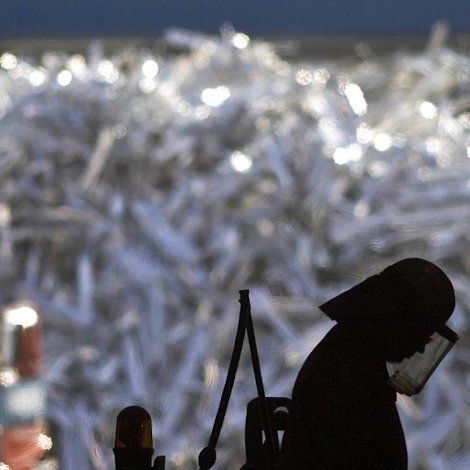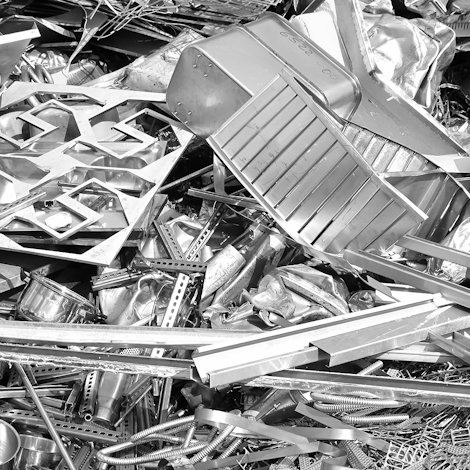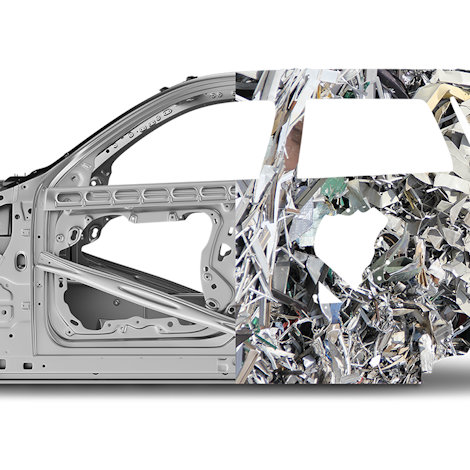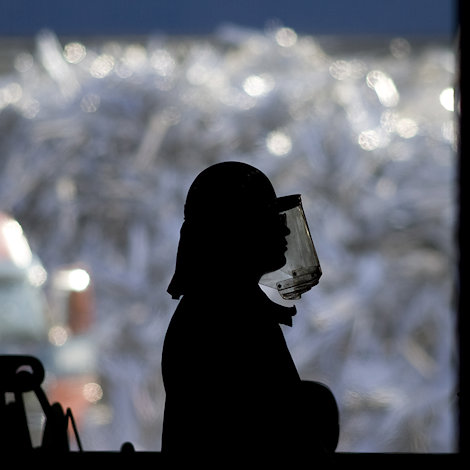How trace elements influence anodized and powder-coated aluminium profiles
We are seeing higher and higher percentages of recycled post-consumer scrap in low-carbon aluminium products. Due to limitations in sorting methods, however, we can expect slightly elevated levels of trace elements such as iron, copper and zinc in these aluminium alloys. It is therefore important to understand whether the trace elements can affect the characteristics of anodized or powder-coated products.
Worldwide trends and requirements from end-users to reduce carbon footprint is increasing the demand for higher recycled content in new products. This can be challenging for aluminium products requiring high surface quality, as the trace element levels in recycled post-consumer scrap are going to be slightly higher than the levels found in primary-based aluminium.
The increased concentration of these elements will not deteriorate the mechanical properties of the final product. There are areas of concern, however. These are mainly corrosion, such as filiform corrosion for powder-coated aluminium profiles, and anodizing quality.
Influence of trace elements on anodized 6xxx-series aluminium alloys
During the anodizing process, a protective oxide layer is created on the aluminium surface. This layer improves both corrosion and weathering resistance, and the surface appearance. The steps in the anodizing process involve degreasing, rinsing, etching, deoxidizing, anodizing and sealing.
During normal alkaline etching prior to anodizing, one can experience that for alloys containing zinc at the concentration higher than 0.025 wt% some grains are etched deeper than others. This preferential grain etching (PGE) effect is significantly reduced when the alloy contains a trace amount of copper.

As part of the work we presented in 2024 at the Aluminum Extrusion Technology Seminar & Exposition (ET) in Florida, we studied in detail the effect of zinc, copper and manganese concentration in aluminium alloy 6060 as well as temper on PGE.
One of our conclusions is that temper has an influence on surface appearance. In addition, the influence of copper in preventing PGE is evident and in line with previously reported data. The impact of higher manganese may not be as pronounced.
Further, we examined the impact of adding both copper and manganese on the development of preferential grain etching patterns in the alkaline pre-treatment process. It was confirmed that adding copper to alloys containing 0.05 wt% zinc significantly reduced PGE. Adding manganese was not as effective as adding small amounts of copper to the same alloy.
With regard to tempers, we studied the effect of three different temper conditions – T4, T6 and T7 – and found that alloys in the T4 temper showed a slightly higher tendency for PGE and more glossy surfaces.
We demonstrated that the etching pattern on aluminium alloys can be influenced by the alloy’s chemistry as well as its temper conditions.
Influence of trace elements and surface processing on powder-coated 6xxx-series aluminium alloys
Etching is also important in pre-treatment before powder coating – a technique that provides a protective and decorative finish on aluminium surfaces.
In our investigation of the influence of trace elements and surface processing on powder-coated aluminium alloys, presented at the ET Conference, we tested extruded profiles with three different chemical compositions.
We know that the etching degree has an impact on resistance to filiform corrosion. However, questions have arisen regarding powder coating of recycled alloys with a higher concentration of trace elements, because one might expect that prolonged etching could result in copper enrichments on the surface and potentially worsen the resistance to filiform corrosion.
At the same time, it was important to evaluate whether the minimum recommended etching rate is sufficient to achieve high surface quality of recycled alloys for the subsequent coating process.
We found that the filiform corrosion resistance of the 6060 aluminium alloy profiles was not significantly affected by small variations in chemical composition, mainly copper content. When recommended pretreatment methods were used, all the results met the Qualicoat requirements. That said, we did observe corrosion in regions that were accidentally not chemically treated.
Positive results for both anodized and powder-coated aluminium profiles
Our conclusion is that anodized and powder-coated profiles can both exhibit excellent surface and corrosion properties, with the alkaline etching step playing a very important role in both processes.
With anodizing, the elevated concentration of zinc was responsible for the undesired preferential grain etching observed after the alkaline etching process. We verified that modifying the alloy composition by adding copper would significantly reduce PGE. One should keep in mind that the temper of the alloy also affects the etching morphology, with alloys in the T4 temper being more susceptible to this problem. It is important to remember that the chemical composition of the etching bath will also affect the etching process. The surface appearance can be changed by varying the types and concentration of additives.
When it comes to powder coating, it is evident that sufficient pre-treatment is essential for achieving the desired corrosion resistance in the final product. Increased concentration of copper in 6060 aluminium alloys does not affect corrosion properties as soon as pre-treatment is properly applied (recommended 2 gr/sqm etch rate).








